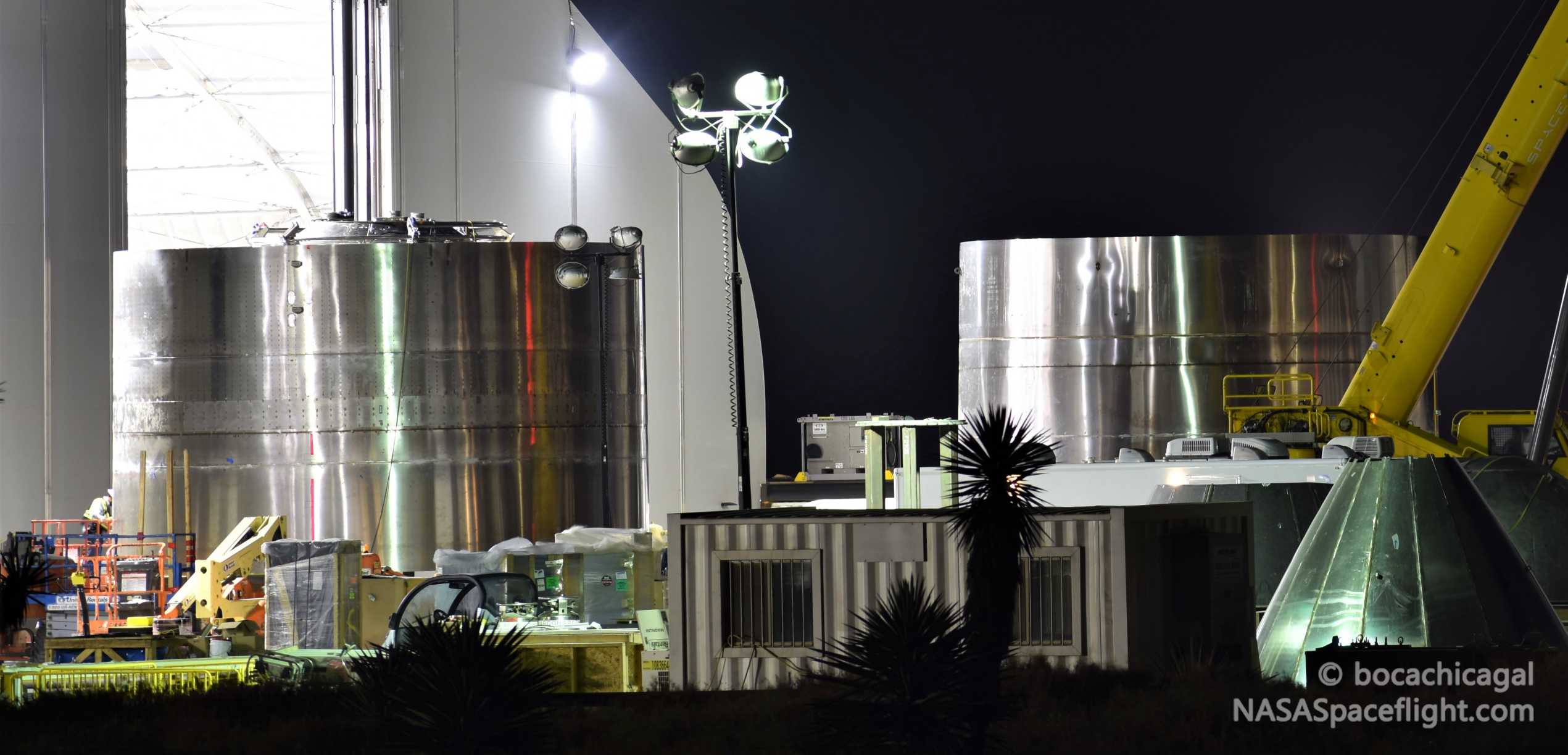

News
SpaceX Starship prototype speeding towards launch pad for first Raptor engine tests
SpaceX continues to build full-scale Starship hardware at a jaw-dropping pace, testing the limits of rocket production to complete the fifth full-scale prototype in three months and prepare the ship for its first Raptor engine ignition tests.
This time around, SpaceX CEO Elon Musk is fairly confident that the latest Starship prototype – known as serial number 3 (SN3) – has the best chance yet of becoming the first full-scale ship to pass acceptance tests and kick off a Raptor engine static fire campaign. A step further, if said static fires go according to plan, Starship SN3 could become the first full-scale vehicle of its kind to perform controlled flight tests.
Starship SN3 will thus attempt to follow in the footsteps of Starhopper and hopefully avoid an unintentional launch debut similar to the one that destroyed Starship SN1 earlier this month. A successful Starship flight test powered by three Raptor engines would be a major bode of confidence in the upgraded rocket factory SpaceX is building in South Texas. Musk recently made it clear that setting up the machine that builds the machine is currently just as important as individual Starship tests. Thankfully, given that SpaceX is already managing to build colossal rocket prototypes in a matter of weeks for what has to be pennies on the dollar, all with a team of just a few hundred people, the next Starship test campaign is likely just a week or two away.
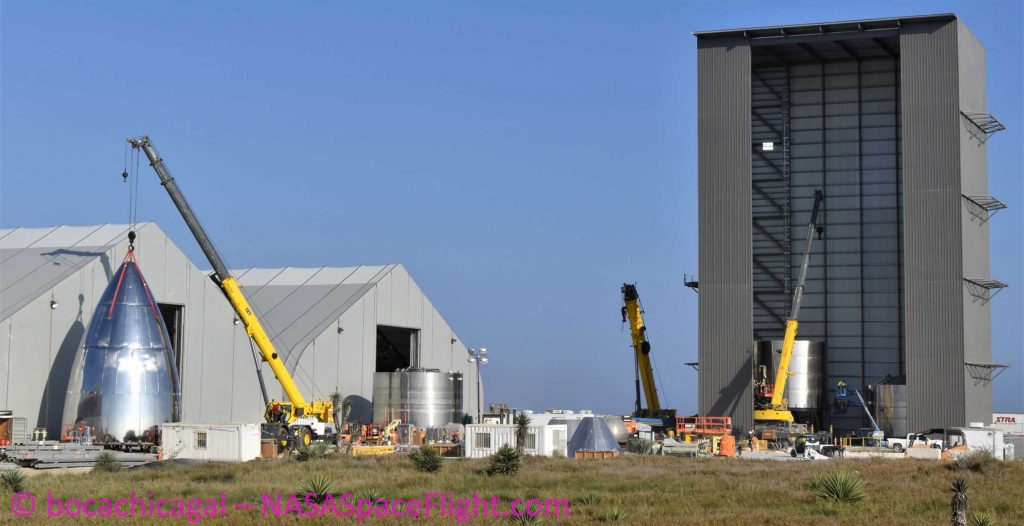
On March 9th, Musk revealed that the Starship SN2 prototype – an incomplete tank repurposed for specific testing – had passed a proof test with flying colors. SN2’s brief test campaign managed to prove that SpaceX had already fixed the weak point believed to have destroyed Starship SN1 less than two weeks prior. Featuring a redesigned engine section and thrust structure (or “thrust puck,” per Musk), the Starship SN2 test tank survived pressure testing and even made it through engine thrust simulations with the help of an industrial-scale hydraulic jack.
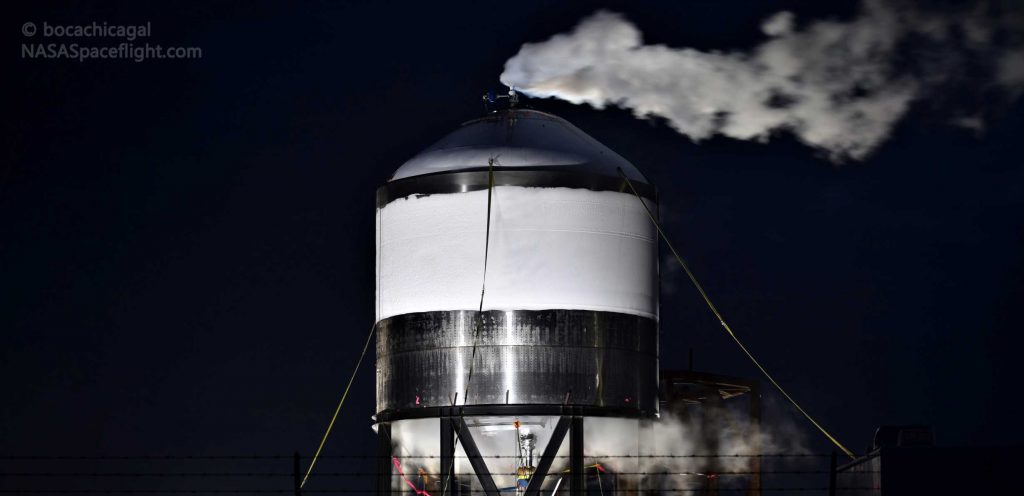
While the tank passed its tests looking no worse for wear, the last-second design changes SpaceX had to make to rapidly perform thrust structure verification testing made it impossible to repurpose for any alternative use. Starship SN2 has thus been relegated to the scrapyard, a technical necessity but also a sign of both the program’s high rate of progress and low prototype cost. SpaceX’s Boca Chica factory has already more or less completed a new engine section for Starship SN3 and is probably just a day or two away from integrating it with the rest of the steel vehicle.
Less than three days after SpaceX’s brand new vehicle assembly building (VAB) had a single, small Starship section sat inside it, two additional sections of Starship SN3’s tank section departed their fabrication tents and were stacked on March 18th. Less than a day later, the third segment of the rocket’s tank section capped off the two that were stacked the day before. Once those three stacked sections are fully welded together to form a single, cohesive piece of steel, it will need to be stacked atop the aft tank dome and thrust structure to effectively complete Starship SN3’s tank section.
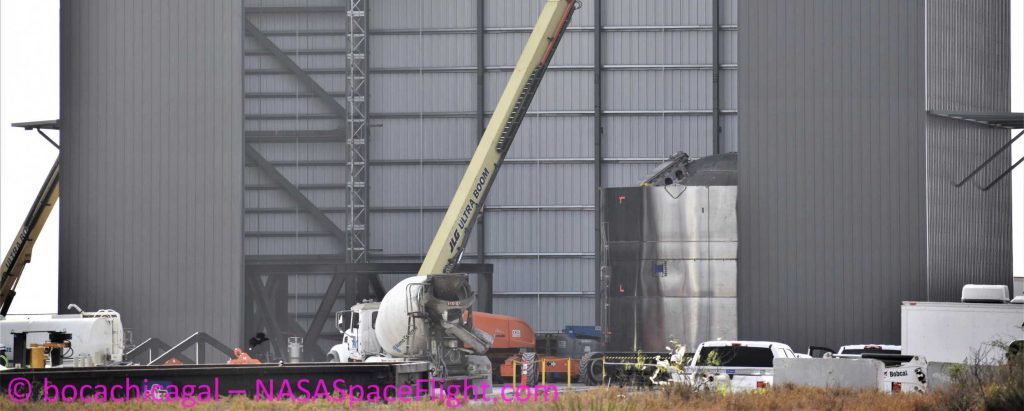
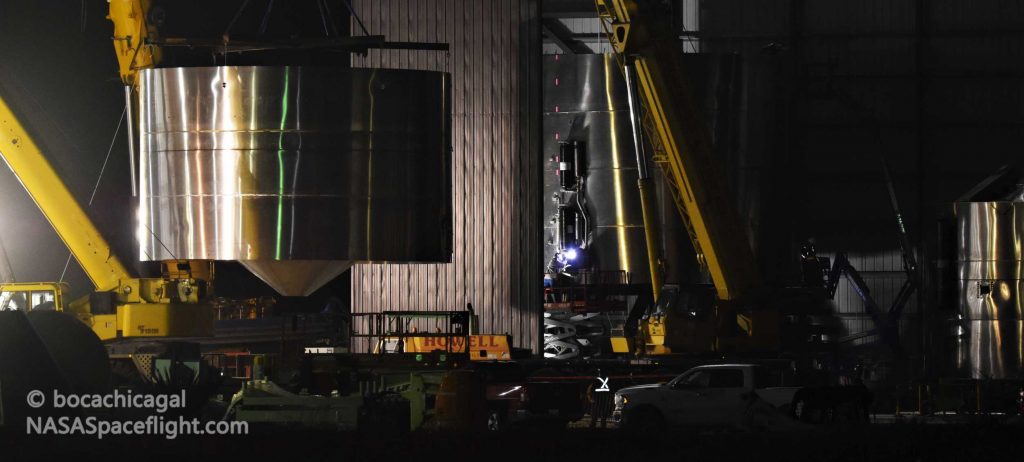
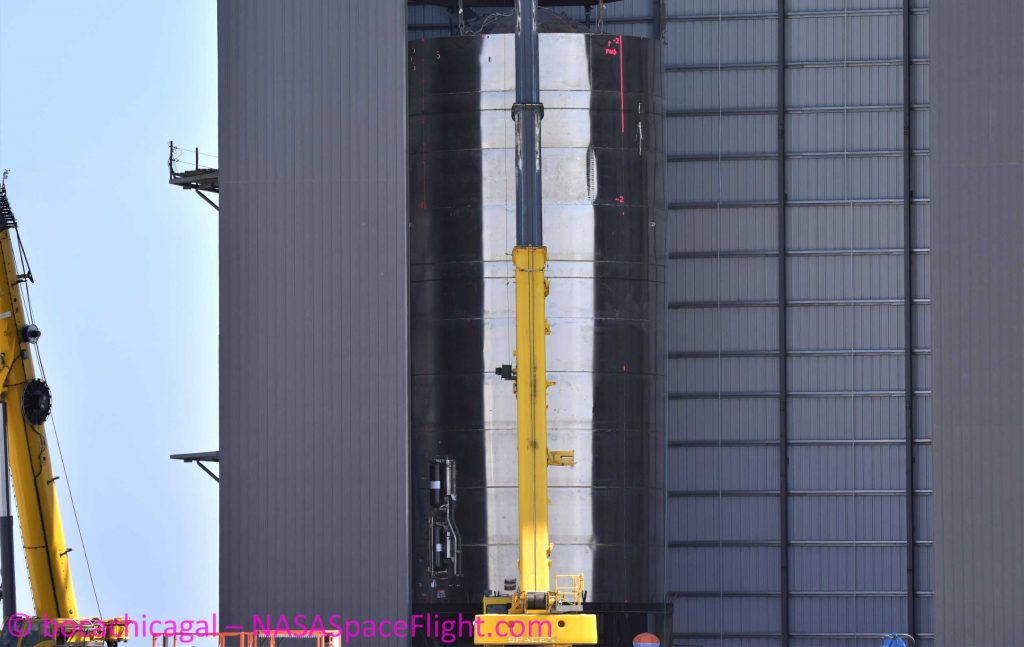
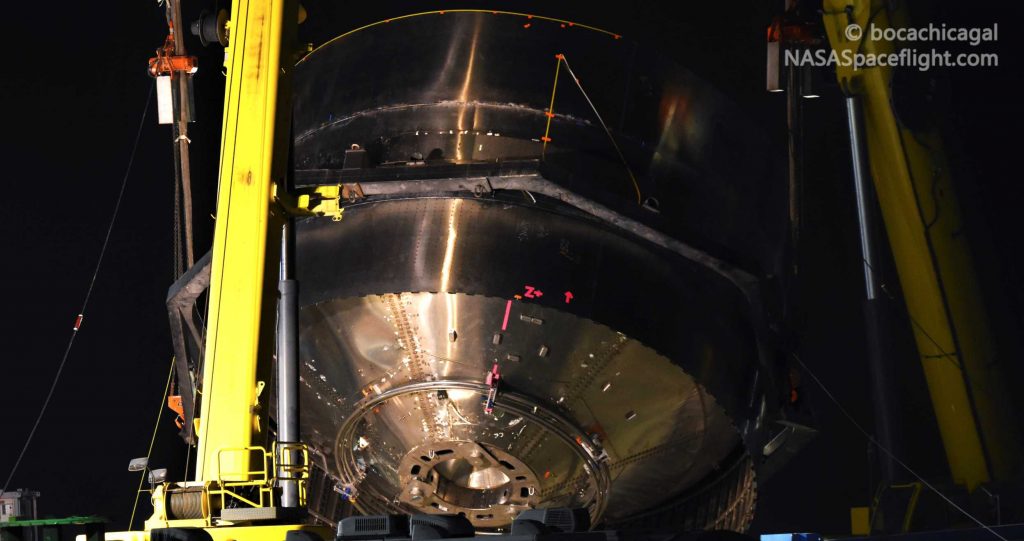
After all four sections are joined, technicians will need to install a few internal parts, but most remaining work mainly involves running wiring and plumbing for power, communications, propellant management, and pressurization. More likely than not, SpaceX replicate its Starship Mk1 and SN1 testing strategy and bring Starship SN3’s tank section to the launch pad for proof testing as soon as outfitting is complete. If the rocket passes proof testing, SpaceX can – for the first time – install functional Raptor engines on a full-scale Starship prototype and begin a crucial wet dress rehearsal (WDR) and static fire test campaign.
At the current rate of progress, SpaceX could easily be ready to transport Starship SN3 to the pad within the next week, give or take. Stay tuned for updates as the company works to quickly finish SN3 integration and move onto the testing phase.
Check out Teslarati’s Marketplace! We offer Tesla accessories, including for the Tesla Cybertruck and Tesla Model 3.

Elon Musk
Elon Musk confirms xAI’s purchase of five 380 MW natural gas turbines
The deal, which was confirmed by Musk on X, highlights xAI’s effort to aggressively scale its operations.

xAI, Elon Musk’s artificial intelligence startup, has purchased five additional 380 MW natural gas turbines from South Korea’s Doosan Enerbility to power its growing supercomputer clusters.
The deal, which was confirmed by Musk on X, highlights xAI’s effort to aggressively scale its operations.
xAI’s turbine deal details
News of xAI’s new turbines was shared on social media platform X, with user @SemiAnalysis_ stating that the turbines were produced by South Korea’s Doosan Enerbility. As noted in an Asian Business Daily report, Doosan Enerbility announced last October that it signed a contract to supply two 380 MW gas turbines for a major U.S. tech company. Doosan later noted in December that it secured an order for three more 380 MW gas turbines.
As per the X user, the gas turbines would power an additional 600,000+ GB200 NVL72 equivalent size cluster. This should make xAI’s facilities among the largest in the world. In a reply, Elon Musk confirmed that xAI did purchase the turbines. “True,” Musk wrote in a post on X.
xAI’s ambitions
Recent reports have indicated that xAI closed an upsized $20 billion Series E funding round, exceeding the initial $15 billion target to fuel rapid infrastructure scaling and AI product development. The funding, as per the AI startup, “will accelerate our world-leading infrastructure buildout, enable the rapid development and deployment of transformative AI products.”
The company also teased the rollout of its upcoming frontier AI model. “Looking ahead, Grok 5 is currently in training, and we are focused on launching innovative new consumer and enterprise products that harness the power of Grok, Colossus, and 𝕏 to transform how we live, work, and play,” xAI wrote in a post on its website.
Elon Musk
Elon Musk’s xAI closes upsized $20B Series E funding round
xAI announced the investment round in a post on its official website.

xAI has closed an upsized $20 billion Series E funding round, exceeding the initial $15 billion target to fuel rapid infrastructure scaling and AI product development.
xAI announced the investment round in a post on its official website.
A $20 billion Series E round
As noted by the artificial intelligence startup in its post, the Series E funding round attracted a diverse group of investors, including Valor Equity Partners, Stepstone Group, Fidelity Management & Research Company, Qatar Investment Authority, MGX, and Baron Capital Group, among others.
Strategic partners NVIDIA and Cisco Investments also continued support for building the world’s largest GPU clusters.
As xAI stated, “This financing will accelerate our world-leading infrastructure buildout, enable the rapid development and deployment of transformative AI products reaching billions of users, and fuel groundbreaking research advancing xAI’s core mission: Understanding the Universe.”
xAI’s core mission
Th Series E funding builds on xAI’s previous rounds, powering Grok advancements and massive compute expansions like the Memphis supercluster. The upsized demand reflects growing recognition of xAI’s potential in frontier AI.
xAI also highlighted several of its breakthroughs in 2025, from the buildout of Colossus I and II, which ended with over 1 million H100 GPU equivalents, and the rollout of the Grok 4 Series, Grok Voice, and Grok Imagine, among others. The company also confirmed that work is already underway to train the flagship large language model’s next iteration, Grok 5.
“Looking ahead, Grok 5 is currently in training, and we are focused on launching innovative new consumer and enterprise products that harness the power of Grok, Colossus, and 𝕏 to transform how we live, work, and play,” xAI wrote.
Investor's Corner
Tesla gets price target bump, citing growing lead in self-driving

Tesla (NASDAQ: TSLA) stock received a price target update from Pierre Ferragu of Wall Street firm New Street Research, citing the company’s growing lead in self-driving and autonomy.
On Tuesday, Ferragu bumped his price target from $520 to $600, stating that the consensus from the Consumer Electronics Show in Las Vegas was that Tesla’s lead in autonomy has been sustained, is growing, and sits at a multiple-year lead over its competitors.
CES 2026 validates Tesla’s FSD strategy, but there’s a big lag for rivals: analyst
“The signal from Vegas is loud and clear,” the analyst writes. “The industry isn’t catching up to Tesla; it is actively validating Tesla’s strategy…just with a 12-year lag.”
The note shows that the company’s prowess in vehicle autonomy is being solidified by lagging competitors that claim to have the best method. The only problem is that Tesla’s Vision-based approach, which it adopted back in 2022 with the Model 3 and Model Y initially, has been proven to be more effective than competitors’ approach, which utilizes other technology, such as LiDAR and sensors.
Currently, Tesla shares are sitting at around $433, as the company’s stock price closed at $432.96 on Tuesday afternoon.
Ferragu’s consensus on Tesla shares echoes that of other Wall Street analysts who are bullish on the company’s stock and position within the AI, autonomy, and robotics sector.
Dan Ives of Wedbush wrote in a note in mid-December that he anticipates Tesla having a massive 2026, and could reach a $3 trillion valuation this year, especially with the “AI chapter” taking hold of the narrative at the company.
Ives also said that the big step in the right direction for Tesla will be initiating production of the Cybercab, as well as expanding on the Robotaxi program through the next 12 months:
“…as full-scale volume production begins with the autonomous and robotics roadmap…The company has started to test the all-important Cybercab in Austin over the past few weeks, which is an incremental step towards launching in 2026 with important volume production of Cybercabs starting in April/May, which remains the golden goose in unlocking TSLA’s AI valuation.”
Tesla analyst breaks down delivery report: ‘A step in the right direction’
Tesla has transitioned from an automaker to a full-fledged AI company, and its Robotaxi and Cybercab programs, fueled by the Full Self-Driving suite, are leading the charge moving forward. In 2026, there are major goals the company has outlined. The first is removing Safety Drivers from vehicles in Austin, Texas, one of the areas where it operates a ride-hailing service within the U.S.
Ultimately, Tesla will aim to launch a Level 5 autonomy suite to the public in the coming years.








